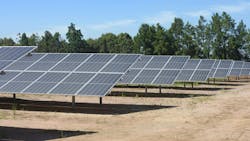Mission 300: World Bank, AfDB Launch Initiative to Bring Electricity to 300 Million Africans by 2030
The World Bank and the African Development Bank (AfDB), in collaboration with key energy partners and nearly 30 African heads of state, have launched Mission 300—a bold initiative to expand reliable, affordable, and sustainable electricity to 300 million people in Africa by 2030.
This week’s Mission 300 Africa Energy Summit in Dar es Salaam, Tanzania, served as the official launchpad for the initiative, bringing together government leaders, private sector investors, and development organizations to accelerate energy access across the continent. With nearly 600 million Africans still without electricity, Mission 300 aims to transform lives, strengthen economies, and power a more sustainable future through innovative technologies, financial incentives, and cross-border energy cooperation.
Minigrids likely to play a key role
Minigrids are likely to play a key role in the Mission 300 initiative as they are already changing the energy landscape in Africa’s poorest and most isolated regions. Sometimes referred to as remote microgrids, minigrids are typically built and operated in areas without access to a central electric grid.
Minigrid systems use software to control distributed renewable energy resources like solar panels and battery storage, providing remote communities with reliable, clean and affordable power.
Minigrids are in high demand across the continent in places like Zambia, Ethiopia and Nigeria. Nigeria is one of the largest minigrid markets in the world with over 100 systems currently online.
Countries commit to work together
One of the notable accomplishments of this week’s energy summit was the participants’ commitment to the Dar es Salaam Energy Declaration, which outlines the actions necessary for Mission 300 to be accomplished.
Energy sector reforms highlighted by the Declaration include building cost-effective power infrastructure, increasing cross-border electricity trading, deploying distributed renewable energy systems, providing financial incentives and strengthening the financial position of utilities.
During the summit, ministers from Côte d'Ivoire, Nigeria, Zambia, Chad, Democratic Republic of Congo, Liberia, Madagascar, Malawi, Mauritania, Niger, Tanzania and Senegal ––12 countries in all––presented energy compacts outlining their electrification targets and implementation timelines.
Each country will blaze its own path to achieving universal access to electricity, but they won’t be doing so in isolation, many of the leaders said.
"Essentially, we see ourselves as a connection of countries that are connected by these regional pools," Kgosientsho Ramokgopa, South Africa’s Minister of Electricity, said during a panel discussion that included ministers from Zambia, Kenya, Côte d'Ivoire and Nigeria.
“There are six countries with whom we exchange electricity and to which we export electricity,” said Mamadou Sangafowa-Coulibaly, Côte d'Ivoire's Minister of Mines, Petroleum and Energy. He added that his country plans to double its gas and hydro power exports to neighboring countries by 2030.
Significant financial investment needed
The World Bank estimates that around $30 billion in public funding and at least $10 billion in private investment will be needed to achieve Mission 300’s ambitious goal.
Financial incentives, such as tax incentives, will be key to attracting private investment in sustainable, scalable energy solutions, according to a statement from the World Bank.
To accelerate the work of Mission 300, multiple organizations have committed to support the initiative. The Rockefeller Foundation, Global Energy Alliance for People and Planet (GEAPP) and Sustainable Energy for All (SEforALL), have all agreed to provide low-cost concessional capital and technical assistance.
About the Author
Kathy Hitchens
Kathy works as a writer and special projects editor for Microgrid Knowledge. She has over 30 years of writing experience, working with a variety of companies in the renewable energy, electric vehicle and utility sector, as well as those in the entertainment, education, and financial industries. She has a BFA in Media Arts from the University of Arizona and a MBA from the University of Denver.
